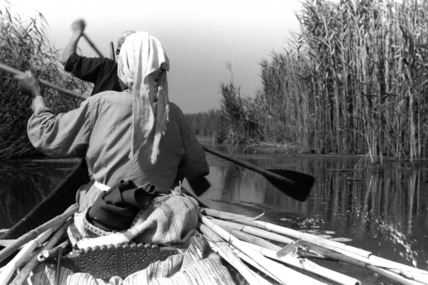Field of Dreams
 |
| Image (C) Badir N. Albadran. Reed Fields near Hareer, Iraq. |
Most of us would look at this emerald expanse, sigh, and think of the Low Country, or the Everglades, or the Bayous, or some other half-wild place of shrimping, crabbing, crawfishing, and trolling from a john-boat.
 |
| Image (c) Jennifer R. Pournelle. Water Buffalo Rancher near Hareer, Iraq. |
Abu Fathi (not his real name) looks at this and sees a hay field. Do not be fooled: there's nothing Rousseauian about this expanse: it did not even exist two years ago. The field was leveled, water diverted, and the reed allowed to grow to young lushness for the sole purpose of feeding cattle. Specifically, water buffalo.
Abu Fathi's brother has a thriving business in Chicago, but Abu Fathi, along with his rather extended family, eschewed the winters of the windy city to pursue a more agrarian business venture at home. He sold up, packed up, and invested all in water buffalo. It's a new departure: in these fields his father tended orchards, not beasts. With salinization the orchards died, but the less-than-ideal waters that killed them are handily digested by Phragmites. To maximize growth, the beasts are penned in mud-walled corrals, fed on vast piles of hand-cut reed-hay.
It's a good living, says Abu Fathi. Hard work, but a good living - he's turning a tidy profit on his investment. But more to the point, he says, the kids are all healthy and strong, with brilliant white teeth. I have to agree: a convivial pack, just released from their classroom, followed me about, giggling and practicing their school-boy English as I snapped photos of outrageously ridiculous things like old boats and dung-heaps.
For us, a living proof-of-concept that expanding reed beds is practicable, locally welcomed, and immediately beneficial. #cmarsh
Labels: #cmarsh, Basra, East Hammar Marsh, Hareer, Iraq, Iraq reporting, irrigation return water, Marshes, MaRSHiI, Reeds, research collaboration, Sustainability, University of Basra, Water, water buffalo, Wetlands











